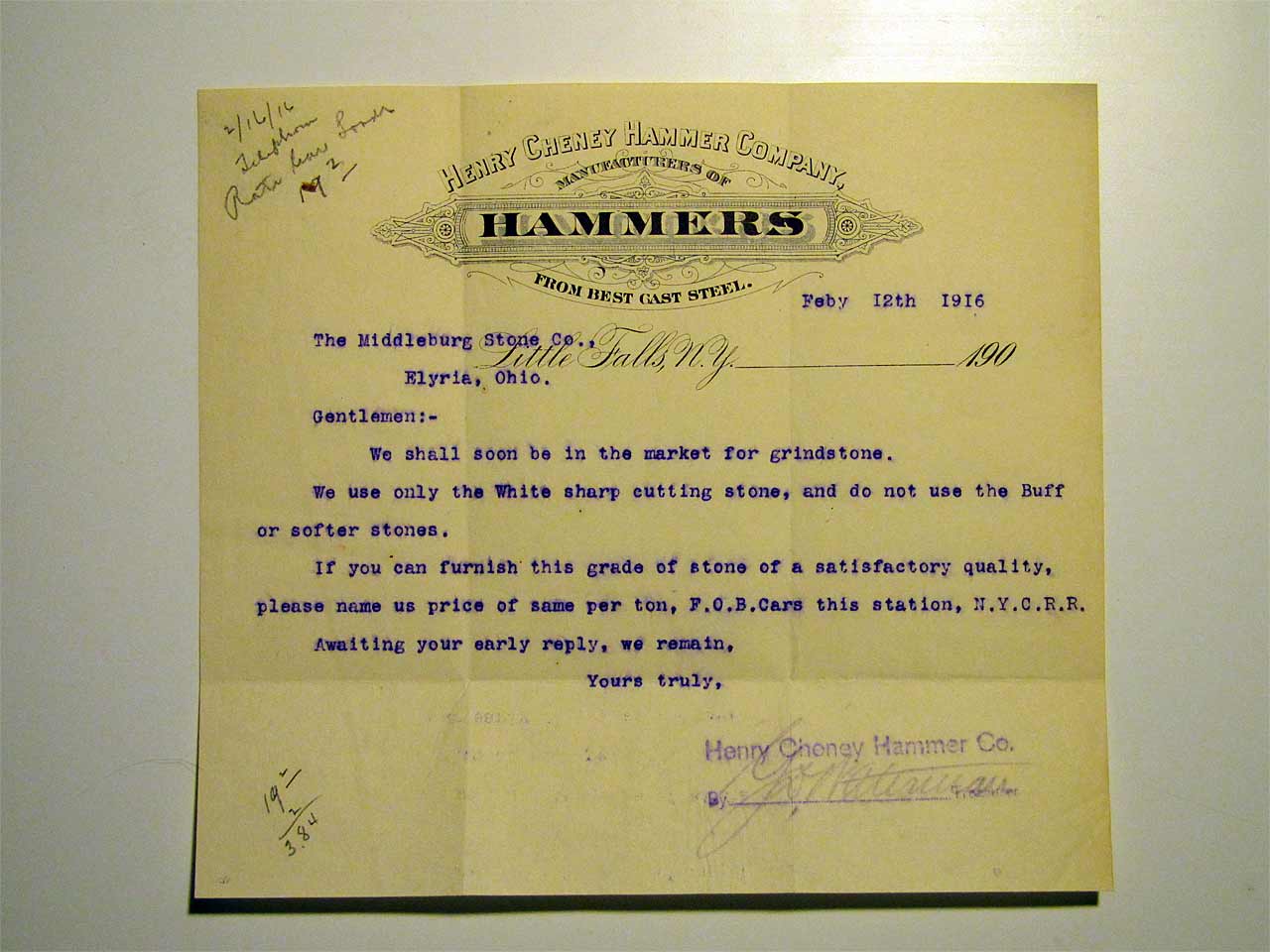
George Dean Waterman (1855-1916) had a long association with the Henry Cheney Hammer Company spanning over thirty-five years. His maternal grandfather, William Ingham, had been the previous owner of the fulling and carding mill where Henry built his hammer factory. His father, Alexander Hamilton Waterman, was an attorney and briefly served as U.S. Consul in Curaçao — shortly before he died on 08 Oct 1856 — when George was still an infant. George joined the company as secretary and treasurer in 1881 — when the first stock company was formed following Henry’s death. He left in December of 1887 to start a business in California — his first cousin once removed (second uncle), Robert Whitney Waterman, became Governor of California on 12 Sep 1887. Apparently it didn’t work out because George returned to Little Falls in April 1890 and resumed his position as secretary and treasurer — at that time his uncle, Schuyler R. Ingham, was president of the company.
In 1891 his maternal grandfather, William Ingham, died at age 96. In 1892 George Waterman acquired 44 of the 200 shares in the company from New York Supreme Court Judge George Anson Hardin, who resigned from the board of trustees. By the turn of the century, when his uncle retired, George Waterman held controlling interest in the company. The board of trustees consisted of himself and Charles Volney Wheeler (1850-1918) — son of the late William T. Wheeler, who had been the first President of the company back in 1881. The kids were running the show. They celebrated by having catalogs and letterhead printed. George Waterman even named a line of hammers after himself — the “GDW” brand hammers listed in the 1904 catalog. And the “Waterman Pattern” Adz-Eye Wire Staple Puller — touted as the most serviceable wire staple drawer made. In 1906 he visited Panama during construction of the canal. In 1908 he returned from Liverpool, England aboard the ill-fated Lusitania. He also oversaw the rebuilding of the hammer factory in brick, including fire doors, which in 1912 saved the newer western half of the factory from the fire that destroyed the eastern half.
On Saturday February 12, 1916 George Waterman sent the following letter to the Middleburg Stone Company of Elyria, Ohio inquiring about grindstone. He died of peritonitis on the morning of Thursday September 28th — just over seven months after signing this letter.
From the note in the upper left corner it appears that this letter was received on February 16th and that they responded by telephone. Long distance calling was established between New York and Chicago in 1892 — though direct distance dialing didn’t become available until 1951. This was definitely an operator assisted call.
This is not the only connection between Elyria, Ohio and the Henry Cheney Hammer Company! By far the most famous products of the company, the Cheney Nailers, were all based on U.S. Patent 1,621,761, which was issued March 22, 1927 to Arthur E. Taylor of — Elyria, Ohio.
The design of this letterhead is very similar in style to the 1904 Illustrated Catalogue of the Henry Cheney Hammer Co. and may have been created by the same artist — who was undoubtedly commissioned by George Waterman. Thus the title of this page.
In September 2003 the Special Publications Committee of the Mid-West Tool Collectors Association reprinted George Waterman’s 1904 catalog — thanks to a generous loan of the original from the collection of William T. Wilkins. It is the primary reference for Cheney Hammers.
Coincidentally, 1904 marks the mid-point in the lifespan of the company — or at least its existence in Little Falls, New York — from the Spring of 1854 until July 2, 1954.
The hammer shown below — thanks to Mel Carlson — is evidence that the Henry Cheney Hammer Company produced custom ball-pein hammers for the toolkit included with Pierce Arrow automobiles during George Waterman’s ownership of the company.
Note the markings “H CHENEY Hammer Co.” In 1917, when David J. Williams took over the company following George’s death, the company was reincorporated as a corporation — thereafter the markings changed to “H. CHENEY CORP.” This is a No. 95 Cheney ball pein with a 16 oz. head. The handle is original and is properly marked with the model number. It would seem likely that George Waterman drove a Pierce Arrow.
George Waterman’s influence on the company outlived him, thanks to a stipulation in his will, by which his investment in the company was to remain so invested. He appointed Joshua Judson Gilbert as trustee until the youngest of his children reached adulthood. J.J. immediately oversaw the sale of George Waterman’s share of the company to his best friend, the Vice President of the Gilbert Knitting Company, and the husband of the widowed daughter of Titus Sheard, founder of the Little Falls Knitting Company — David Jenkins Williams. These guys were up to their necks in the underwear business. D.J. put his step-son, Titus Sheard Hose, in charge of the company. Except for a brief absence for T.S.’s service in the Marines during WWI, things continued this way until both D.J. and J.J. died within two months of each other — November 13, 1924 and January 12, 1925, respectively. On June 23rd 1925 the company was sold to the Prentiss Vise Company — bringing a new ownership with no previous connection to the company.
His letterhead design also lived on. This was probably done under D.J. Williams' ownership, the company was reincorporated in 1917 as the “Henry Cheney Hammer Corporation”, but the following example comes from a letter dated July 14, 1945 — under the ownership of the Mulford family.